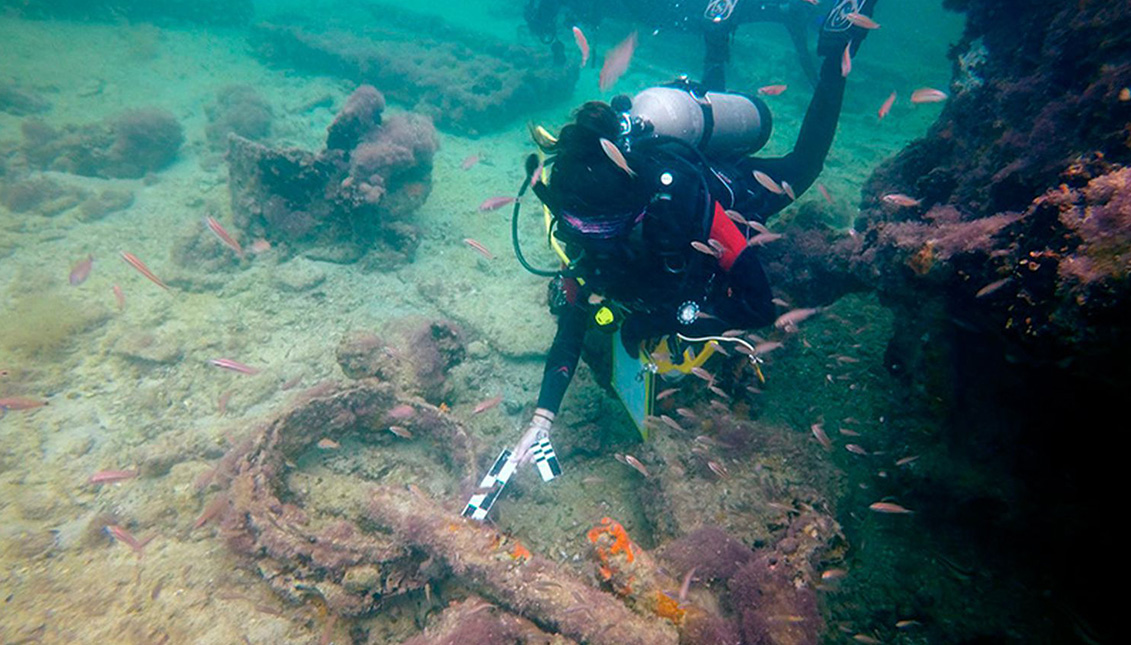
Mayan Slaves in Cuba: The terrible discovery sunk off the coast of Yucatán
A group of Mexican researchers have found the first material evidence of the region's colonial and slave-owning past, and they warn that it is only the tip of…
The discovery was made three years ago a few kilometers off the coast of Sisal, in the state of Yucatán, Mexico. La Unión, a steamship belonging to the Spanish company, Zangroniz Hermanos & Cía, which sank in 1861 shortly after setting sail, was unearthed from the bottom of the sea.
An explosion in one of its boilers was the reason for its sinking; however, the ship was not loaded with merchandise and passengers, as the newspapers of the time made known. There were also Mayan people being taken to Cuba to work as slave labor.
This is what the National Institute of Anthropology and History (INAH) announced this week, highlighting it is an unprecedented discovery in the country, since no proof had ever been found beyond the documents that the practice of slavery had continued after its prohibition following the War of Independence in 1810.
"This shipwreck provides a lot of information about a problem that occurred for decades in this region, but of which we had no evidence beyond the documents of the time," explained Helena Barba, head of INAH for Underwater Archaeology in the Yucatán Peninsula.
"We are touching the tip of the iceberg with this discovery, we still have to go deeper," the scientist pointed out.
The reconstruction of the shipwreck and the history surrounding it was done thanks to documents of the time found in Cuban and Spanish archives, and the stories that have been passed on from generation to generation among Sisal fishermen.
"The fact went unnoticed and was avoided to give it much diffusion, I think intentionally, just saying that the passenger traffic with Cuba was suspended for the time being," Barba said.
It happened during the so-called War of Castes, a conflict that took place after Mexico's war of independence, when the natives rose up against the abuses of the Creole and mestizo elites that held political and economic power.
The "hookers," who were both Spanish and Mexican, promised the natives that they would have a better and freer life if they embarked on Cuba, which remained a Spanish colony. But the reality was different as they would end up working as slaves under mostly false contracts.
RELATED CONTENT
"There were children and adult Mayans who were treated like merchandise and who were part of an impressive slave trade," said Helena Barba.
That way, ships like La Unión left Cuba carrying sugarcane, arrived to places like Yucatán and followed their route back to Sisal, where they carried a mixed load of materials such as leather and wood, and also first and second-class passengers. The researcher said that by the time the Indians were already on board the ship and discovered the deception, they were locked up in small compartments because they were part of the merchandise. Then they sold them for 25 pesos more or less, but their price tripled when they reached the final "client."
The Zangroniz y Hermanos company alone traded about 3,600 slaves for a decade, although the figure could be higher because of the lack of trafficking records. At the time of La Unión's sinking, there were 80 crew members, 60 passengers and an unknown number of slaves on the ship.
The high temperatures of the ship when it caught fire, the water currents and bacteria erased the trace of many bone remains. But, researchers have set out to identify them so the descendants of these men and women can recover that piece of history, a part of which is in Havana, in the Campeche neighborhood, where many of these slave groups are believed to have resided.
Now, the long-submerged past will serve to bring justice and reveal the hidden face of the much-vaunted Mexican Revolution, even though Benito Juarez himself forbade the trade of indigenous people a few months before the shipwreck of La Union and under penalty of death.











LEAVE A COMMENT: